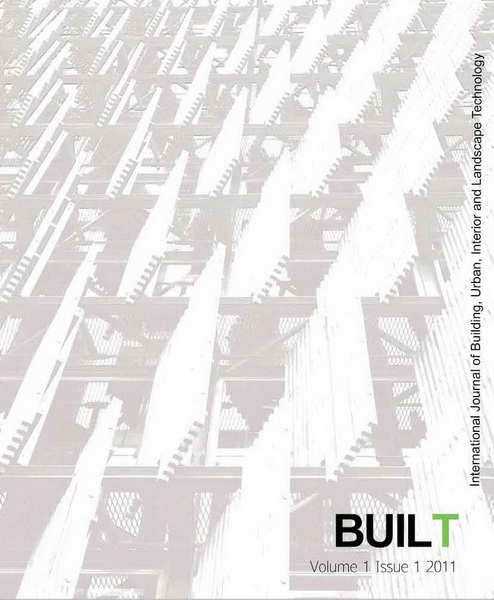Development and Validation of an Algebraic Turbulence Model for Outdoor Airflow and Contaminant Simulations around a Building
DOI:
https://doi.org/10.56261/built.v1.170316Keywords:
Algebraic model, Pollutant dispersion, ConcentrationAbstract
The design of outdoor environment requires a tool that could provide fast and reliable simulations for outdoor airflow and contaminant dispersions. This investigation has developed and validated a new algebraic turbulence model for outdoor environment design. The new model was tested by a natural ventilation case and two contaminant dispersion cases. The computed air velocities and contaminant concentrations agree well with the wind tunnel measurements. The computation time for the new model is about two times faster than the time needed by the standard k-ε model with an even better accuracy for the three validation cases.
Downloads
References
CHAM. (2005). Phoenics user manual for program version 3.6. UK: CHAM Ltd.
Chen, Q., & Xu, W. (1998). A zero-equation turbulence model for indoor airflow simulation. Energy and Buildings, 28(2), 137-144.
Huber, A., Synder, W. H. & Lawson, R. E. (1980). The effects of a squat building on short stack effluents: A wind tunel study. Report EPA-600/4-80-055, U. S. Environmental Protection Agency, Nort Carolina.
Jiang, Y. (2002). Study of natural ventilation in buildings with large eddy simulation. Ph.D. Thesis, Department of Architecture, Massachusetts Institute of Technology, USA.
Jiang, Y., Alexander, D., Jenkins, H., Arthur, R., & Chen, Q., (2003). Natural ventilation in buildings: measurement in a wind tunnel and numerical simulation with large- eddy simulation. Journal of Wind Engineering and Industrial Aerodynamics, 91, 331-353.
Li, Y., & Stathopoulos, T. (1997). Numerical evaluation of wind-induced dispersion of pollutants around a building. Journal of Wind Engineering and Industrial Aerodynamics, 67&68, 757-766.
Selvam, R. P. (1997). Numerical simulation of pollutant dispersion around a building using FEM. Journal of Wind Engineering and Industrial Aerodynamics, 67&68, 805-814.
Srebric, J., Chen, Q., & Glicksman, L. R. (1999). Validation of a zero-equation turbulence model for complex indoor airflow simulation. ASHRAE Transaction, V.105, Pt. 2.
Tominaga, Y., Murakami, S., & Mochida, A. (1997). CFD prediction of gaseous diffusion around a cubic model using a dynamic mixed SGS model based on composite grid technique. Journal of Wind Engineering and Industrial Aerodynamics, 67&68, 827-841.
Downloads
Published
How to Cite
Issue
Section
License

This work is licensed under a Creative Commons Attribution-NonCommercial-NoDerivatives 4.0 International License.












